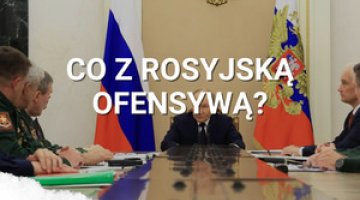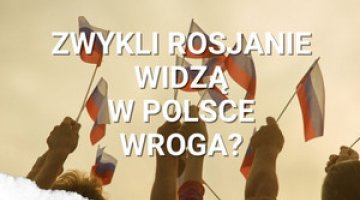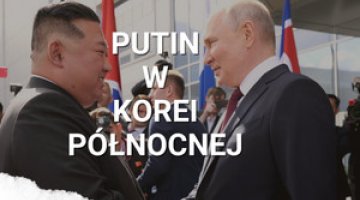Russia announces the annexation of four regions of Ukraine

On the afternoon of 30 September, President Vladimir Putin signed ‘agreements’ to annex four Ukrainian oblasts to Russia: Donetsk (the so-called Donetsk People’s Republic, DPR), Luhansk (the so-called Luhansk People’s Republic, LPR), Kherson and Zaporizhzhia. In a speech before the ceremony, he declared these acts irreversible. At the same time, he called on Kyiv to cease hostilities immediately and enter peace talks. He reiterated that Russia would defend its territory with all means available to it. For most of the speech, he accused the West (led by the US) of trying to perpetuate a neo-colonial global hegemony and seeking to destroy Russia and enslave the Russian people. Kremlin spokesman Dmitri Peskov declared the need to ‘liberate’ those parts of the annexed territories of the so-called DPR that are occupied by enemy forces, and said that Moscow would treat Ukrainian attacks on the annexed areas as aggression against its territory.
According to announcements, the Russian parliament (the State Duma and the Federation Council) is expected to formally confirm the annexation on 3–4 October. Most likely, another federal district will be established to cover the annexed areas together with occupied Crimea (the ‘Crimean/Taurida Federal District’).
The Ukrainian authorities considered the Russian declarations to be null and void. At the same time, they stressed that the Ukrainian state and its armed forces would fully restore the country’s territorial integrity by winning the war. In his statement, President Volodymyr Zelensky said that talks with Russia will only be possible if Putin is not the leader. Together with the defence minister and the speaker of parliament, he signed a motion calling for Ukraine’s accelerated membership of NATO.
The major Western organisations (including NATO and the European Union) and the leaders of a number of countries, particularly in the West, called the attempted annexation illegal, refused to recognise it, and announced their strong support for Ukraine and its territorial integrity. On 30 September Russia vetoed the UN Security Council’s resolution condemning and rejecting the annexation (out of the 15 UNSC members, China, India, Brazil and Gabon abstained). At the same time, the US announced another package of financial and military aid to Ukraine and new sanctions targeting Russia. The European Commission also announced the preparation of another package of restrictions (the eighth).
Commentary
• The annexation’s ad hoc political purpose is to indicate that the so-called special military operation has been successful, and that Russia has not lost its ability to reclaim territories it considers as its own. However,, the annexation is in effect an attempt to cover up the defeats it has suffered on the frontline in political and propaganda terms. It also signals that the armed conflict will not be ‘frozen’ if Kyiv continues to reject Russia’s policy of establishing ‘facts on the ground’. The Kremlin realises that President Zelensky will not change his attitude on this issue, so it will pressure the West instead, using the nuclear ‘bogeyman’ in an attempt to reduce military support for Ukraine and scale down the Ukrainian army’s combat operations. To this end, Putin has made what amounts to a mock peace offer. At the same time, Russian government representatives have emphasised that the annexed territories will be under the ‘nuclear umbrella’ after their incorporation into the Russian Federation.
• However, Moscow’s manoeuvres have not had the desired effect. Kyiv has not ceased its military activity, and is not succumbing to the attempts at nuclear blackmail. Ukrainian politicians have taken the possibility of a limited nuclear strike seriously, and the emergency services are preparing to deal with the consequences. Also, the attitude of the US and other Western countries to date does not indicate that they are ready and/or able to pressure Kyiv into limiting its right to self-defence.
• By deciding to annex four Ukrainian oblasts within their administrative boundaries (their total area is approximately 110,000 km2; they account for 18.2% of Ukrainian territory), Russia is also attempting to incorporate territories that its armed forces do not even at present control. According to Ukrainian estimates, until recently about 88% of Kherson oblast, 67% of Zaporizhzhia oblast, 57% of Donetsk oblast and 99% of Luhansk oblast were under occupation. Ukraine has also lost 4% of the Mykolaiv oblast, an area that Moscow has counted as part of the occupied Kherson oblast. A total of 327 municipalities (hromady) were under Russian control before the Ukrainian counter-offensive began in mid-September. Combat operations are still ongoing in many of them, which leaves the front line unstable. Moreover, Ukrainian forces are regaining control of some localities (such as Lyman and Torske). Moscow’s recognition of these areas as Russian territory is a pretext for it to escalate the conflict. Russia will treat the Ukrainian army’s continuation of its combat operations in the occupied territories as an act of aggression not only against Russia, but also against the Union State of Russia and Belarus. This may increase pressure on Lukashenko to actively join in the defence of its ‘attacked’ ally.
• It is uncertain whether Russia can continue to maintain control over the territories it has annexed, as this area will see further Ukrainian counter-offensives and irregular activities in the rear of the invading army. The Ukrainians will continue shelling, and representatives of the occupying authorities will be targets of assassination attempts. This will make it difficult for the imposed ‘civilian administration’ to function, and the Russian military administration will increasingly play a central role in governance. The process of ‘integrating’ the area that Russia manages to hold will not be quick: according to Russian officials, it could take several years and require large expenditures. Suppressing pro-Ukrainian attitudes will be another challenge for the Russians, especially in the Kherson and Zaporizhzhia oblasts. Russia’s new ‘territory’ will be subject to a policy of brutal repression, and those disobedient to the new regime are likely to be deported into Russia proper.
• The territorial annexations, along with the expanded military mobilisation in the Russian Federation and the resort to nuclear blackmail, are elements of a new phase in the Kremlin’s domestic policy. It is based on a clear message to the political & business elite and the wider public that Russia is fighting against the whole of NATO for physical survival, and has therefore just reached the point of no return. This makes it impossible to deviate from Putin’s stated goals of war, which formally refer to the ‘liberation of the Donbas’, but actually boil down to the destruction of the Ukrainian state and the dismantling of the Euro-Atlantic community. Thus, the Kremlin is betting everything on a single throw of the dice, and ruling out any discussion within the elite about possible concessions to Ukraine (e.g. a return to the status quo ante 24 February) in order to end the war as soon as possible. By doing so, however, Moscow has dramatically narrowed its own room for manoeuvre.
• The annexations, which the Kremlin has presented as a triumph, do not arouse enthusiasm either in the Russian establishment or among the citizens. The attitudes of the elite will be determined by the broader context, which will consist of the following elements: the consequences of the annexation for Russia’s international position and its security; individual calculations of the profits and costs of loyalty to Putin; the deterioration of public sentiment (mainly as a result of fear and resistance to mobilisation); the dynamics of events at the front; further actions by the West; and the effects of an economic crisis that may prove to be the deepest and longest since the collapse of the USSR. If Russia makes a breakthrough in the situation at the front in its favour and at least keeps control over the areas it currently holds, the Kremlin will most probably avoid major political risks. The ruling elite will likely remain loyal to the Kremlin regardless of the increasing costs of participation in the neo-totalitarian system of power (any opposition will mainly take the form of political emigration). Russian society will adapt to life under the new, harsher conditions which will be caused, among other things, by the continued maintenance of the international sanction regimes.
• If, on the other hand, Russia suffers further military defeats and loses most of the occupied territories, that could sow dissent in the ruling elite. Tensions will be most likely exacerbated by military mobilisation, which is extremely unpopular among the public, and high losses on the battlefield. At that point, the Kremlin will probably attempt to make an example of someone by punishing the disloyal and carrying out purges within the elite to identify scapegoats. It will also be forced to escalate the war with Ukraine (and de facto with the West) even further. It cannot be ruled out that, if he perceives a direct threat to the regime, Putin will then decide to use tactical nuclear weapons.




